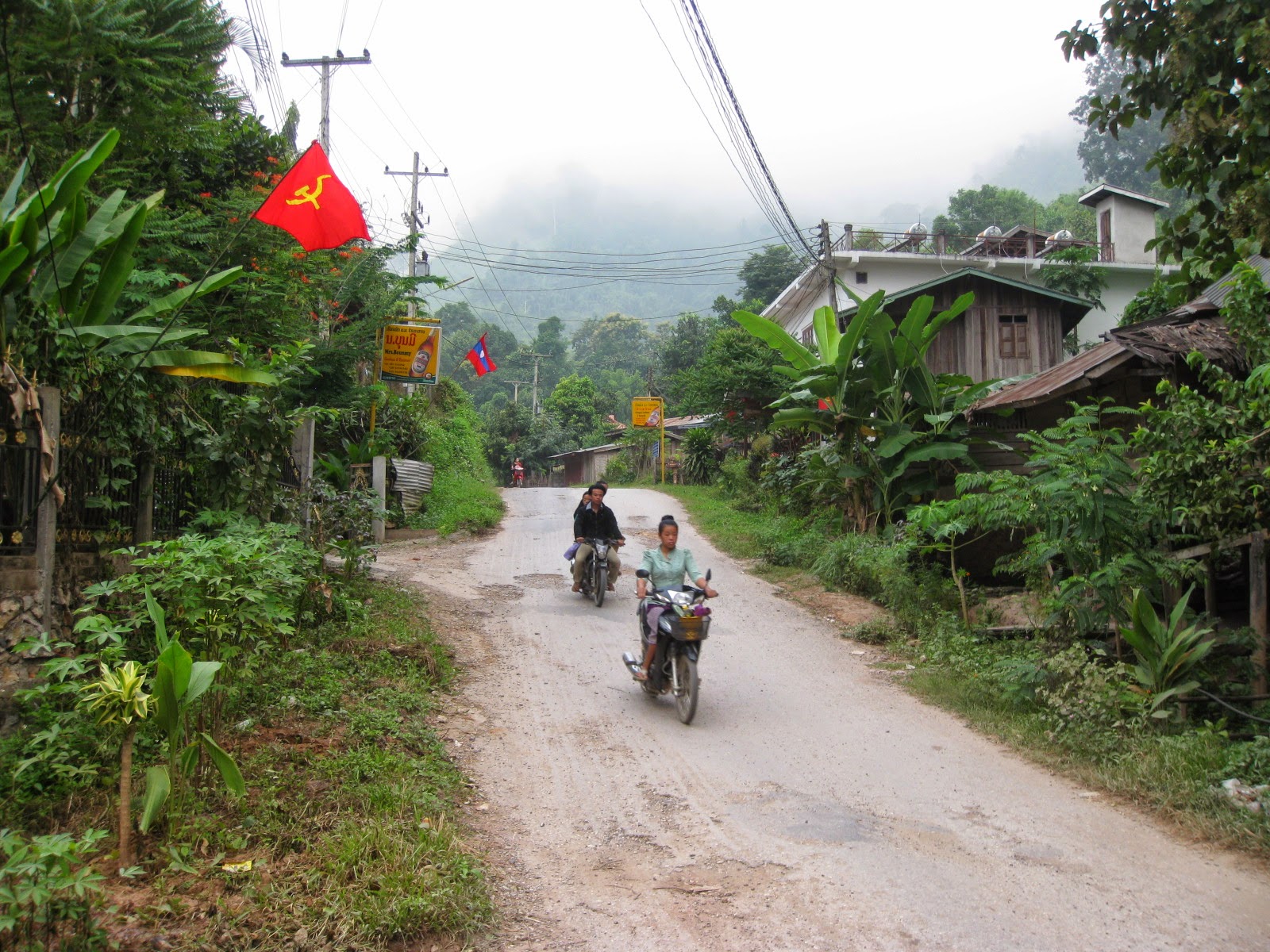| The bats...departing their cave. |
Battambang
is Cambodia’s second most populous city and was the type of
working-class place that I was looking for. Despite its size, it has
that small-town, walk-to-everything feel. Additionally, it boasts more
statues than almost any place I've ever seen!
Ah yes, the Battambang statues -- every circle, every park, every plaza sports a statue or carving. While this is
hardly unique to Cambodia, here they've taken it to a new
level. Animals, mythological creatures (some in obvious sexual excitement),
divinities, you name it, if someone can carve it or cast it you’ll probably
find it in Battambang.
The most famous of these is on
the main road and is of an ancient Khmer king holding up a magic stick used to fight off foes.
The name of both the province and the city, Battambang itself means "lost stick" or "disappearing stick" or some such thing, referring to the club wielded by the legendary king. But to me it'll always mean "place of the flies."
Known as the rice bowl of Cambodia, Battambang is surrounded by abundant water and rich reddish soil -- and livestock and their refuse. Accordingly, it has bustling farmer's markets as well as every type of insect, it seems, on god's green earth.
Almost my entire time there, I was slapping, swishing, cursing at some kind of pesky winged creature. Some so tiny that I could barely even see them. After a while, my legs looked like they had been hit with birdshot I'd been bitten so many times.
 |
| Flame-up while sautéing vegetables -- normal for this type of cooking. |
 |
| The delicious result. |
In one of those ironies, all the insects make possible one of Battambang's greatest attractions -- the bat caves, a short distance outside of town.
In yet another irony, a terrible one, the Khmer Rouge used some of these caves to deposit bodies during their purges during the late 1970s. On top of a hill called Phnom Sampeau, in proximity to Buddha shrines and statues, they executed scores of people and dumped them down in.
One of the infamous killing fields, Phnom Sampeau was typical: Doctors, lawyers, teachers, writers, monks, anyone of the intellectual, anyone even wearing glasses was rounded up by the Communists and marched out, never to return. Altogether, about two million people were dispatched at such sites around the country.
Eventually, after the regime was deposed, the bones were retrieved from the caves here, at Phnom Sampeau, and placed in a memorial display...
 |
| From the "Killing Caves." |
This was a hard one, a hard one to stomach. Just hearing or reading about it was one thing, but seeing the remains of all those murdered people...and done in the presence of Buddha statues yet.
(Some of the skulls were small and poorly formed, I'm told, as the killing squads chucked even babies into the depths.)
Thank goodness for the bats. They live in the same labyrinth of caves and exit at dusk by the hundreds of thousands, some say millions. Swirling counter-clockwise, to relentless zillions of wingbeats, they snake out for hours to feed on insects. They were a sign of life, after the remnants of so much death.
Like all good visitors to the area, I made my way outside of town to see the bamboo train. The term "train" being used loosely here -- a rickety bamboo platform set atop axles and wheels; powered by an 8 hp or so engine, the type you might see on a go-cart or riding lawn mower.
(When you meet a car coming the other way, you just pick up the platform, plop it down atop the other car's axles, and away you go.)
It was used to haul freight and passengers, but is mainly a tourist thing now. It takes you from an abandoned terminal building off through the jungle to some villages and then back, for $5 U.S. The best part was seeing the countryside; you get a look at the way rural Cambodians live.
All things must come to an end, and this was the end of the line for me, as far as Cambodia. Traveling through the Kingdom and Lao beforehand was rewarding in ways that I can't describe. Sometimes it takes me weeks and months to process it all, it's so much.
But it was also rigorous travel and taxing on the mind and body. I was making silly mistakes again and getting testy with people, as I tend to do when I get road-weary.
In short, it was time for the Land of Smiles -- Thailand. The country and the culture (and the roads) are step up in many ways, much easier to take. And it's such a fun place to boot. I'd head over there and veg-out for a while.

[PART SEVEN TO FOLLOW NEXT WEEKEND]
(When you meet a car coming the other way, you just pick up the platform, plop it down atop the other car's axles, and away you go.)
It was used to haul freight and passengers, but is mainly a tourist thing now. It takes you from an abandoned terminal building off through the jungle to some villages and then back, for $5 U.S. The best part was seeing the countryside; you get a look at the way rural Cambodians live.
But it was also rigorous travel and taxing on the mind and body. I was making silly mistakes again and getting testy with people, as I tend to do when I get road-weary.
[PART SEVEN TO FOLLOW NEXT WEEKEND]






















































